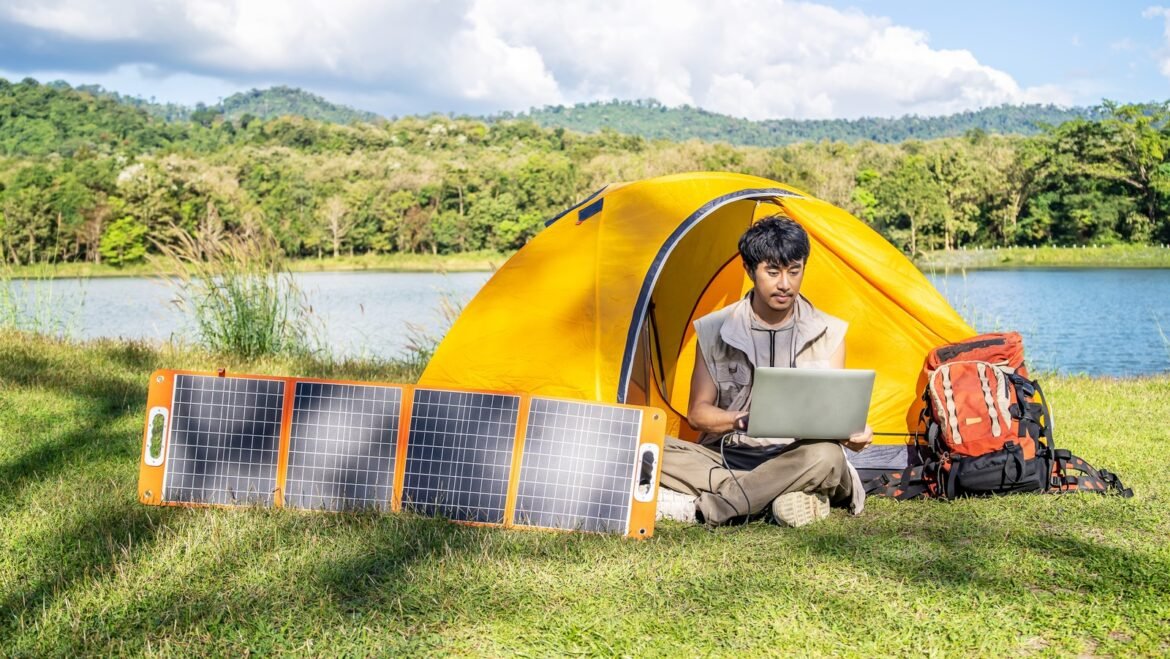Camping trips offer a chance to disconnect, but staying connected to power for essentials like lights, phones, and cooking devices can make the experience smoother and safer. Solar generators provide a clean, quiet, and reliable energy source without the noise and fumes of gas-powered alternatives. Unlike traditional generators, they require no fuel—just sunlight—making them eco-friendly and cost-effective for outdoor adventures. Whether you’re charging phones, running a portable fridge, or powering LED lights at night, a solar generator ensures you have electricity wherever you go. In this article, we’ll guide you through selecting the right solar generator, setting it up efficiently, and maximizing its performance for a hassle-free camping experience.
Essential Gear for a Solar-Powered Campsite
Choosing the Right Solar Generator for Your Trip
The first step is selecting a solar generator that matches your energy needs. For weekend campers charging phones and small devices, a compact 300W–500W generator with 300Wh–500Wh capacity is sufficient. However, if you’re running a portable fridge, CPAP machine, or electric grill, opt for a 1000W+ unit with at least 1000Wh battery capacity. Consider weight and portability—some generators come with built-in handles or wheels for easier transport. Also, check the inverter type: pure sine wave inverters are safer for sensitive electronics like laptops and medical devices, while modified sine wave models are cheaper but less reliable for delicate gear.
Must-Have Solar Panels for Efficient Charging
Solar panels are crucial for keeping your generator charged. For most campers, a 100W–200W foldable solar panel is ideal—it’s portable, easy to set up, and provides enough power to recharge a mid-sized generator in 5–8 hours of sunlight. If you need faster charging, look for high-efficiency panels with 20%+ solar conversion rates. Rigid panels are more durable and efficient but bulkier, making them better for car camping than backpacking. Always match the panel’s voltage and connector type with your generator to ensure compatibility.
Cables, Adapters, and Accessories You’ll Need
Don’t forget the small but essential accessories. A sturdy extension cable lets you place solar panels in direct sunlight while keeping the generator in the shade. MC4 connectors are common for solar panels, so ensure your generator supports them or carry an adapter. A waterproof storage bag protects your generator from rain, and a portable power strip helps when charging multiple devices. For winter camping, a battery warmer (if compatible) prevents lithium batteries from losing efficiency in cold weather.
Step-by-Step Guide to Setting Up Your Solar Generator
Finding the Best Spot for Solar Panels (Sun Exposure Tips)
Solar panels work best in direct sunlight, so avoid shaded areas under trees or near tall objects. Place them at a 30–45-degree angle facing south (in the Northern Hemisphere) for optimal sun exposure. If you’re camping in a sunny location, adjust the panels every few hours to follow the sun’s movement. On cloudy days, angle them more steeply to catch diffused sunlight. Keep panels clean—dust and debris can reduce efficiency by up to 20%.
Connecting Your Solar Generator to Devices Safely
First, connect the solar panels to the generator before exposing them to sunlight to avoid power surges. Then, plug in your devices, starting with the highest-priority items like medical equipment or a fridge. Avoid overloading the generator—check its max wattage and stay within 80% of its capacity for safety. If using an extension cord, ensure it’s rated for outdoor use and can handle the power draw. Always turn off the generator when not in use to conserve battery life.
Testing and Optimizing Power Output
After setup, test the system by running your essential devices to ensure everything works smoothly. Monitor the battery level and recharge time—if the generator isn’t charging fast enough, consider adding another solar panel or repositioning for better sunlight. Some generators have apps that show real-time power usage, helping you track efficiency. If your devices drain the battery too quickly, prioritize energy-saving modes or reduce usage of high-power appliances.
What Can You Power at Your Campsite?
Solar generators can handle a variety of camping essentials. A 300W unit can charge phones, tablets, and LED lights for days. A 500W–1000W generator can run a portable fridge (50W–100W), a small blender (300W), or a CPAP machine (30W–60W) overnight. For larger setups, a 1500W+ generator can power an electric grill (1000W) or a projector (200W) for outdoor movie nights. Always check device wattages and add them up to ensure your generator can handle the load.

Tips to Maximize Battery Life & Efficiency
To extend battery life, avoid draining it below 20%—deep discharges can shorten lifespan. Recharge the generator daily, even if not fully depleted, to keep the battery healthy. In cold weather, store the generator in an insulated bag to maintain efficiency. Use energy-saving modes on devices, such as dimming LED lights or lowering fridge temperatures slightly. Turn off unused devices to prevent phantom power drain.
Common Mistakes & How to Avoid Them
A common mistake is underestimating power needs—always calculate total wattage before buying. Another error is placing solar panels in the shade, drastically reducing charging speed. Some campers forget to bring compatible cables, leaving them unable to connect panels. Finally, overlooking weather resistance can lead to damage—choose a generator with at least an IP65 rating for rain protection.
Conclusion
A solar generator is a game-changer for campers, providing clean, reliable power without the hassle of fuel or noise. By choosing the right generator, setting it up properly, and following efficiency tips, you can keep your devices running smoothly throughout your trip. For a trusted solution, EcoFlow solar generators are a top choice, offering a wide range of models from 256Wh to 7200Wh to suit any camping need. With industry-leading weatherproofing (IP68) and 23% solar conversion efficiency, they ensure uninterrupted power for lights, fridges, and medical devices. Whether you’re a weekend camper or an off-grid adventurer, EcoFlow’s reliable performance and excellent customer support guarantee a stress-free experience. Pack smart, camp sustainably, and enjoy the outdoors with confidence!


